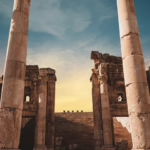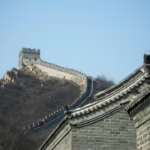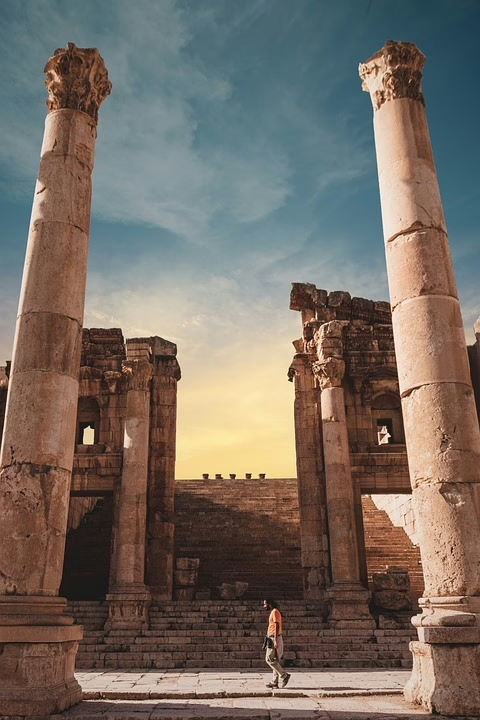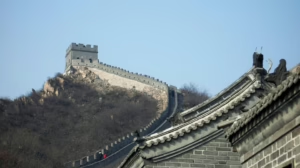From Ancient Lands to Modern Struggles: The Story of Kosovo
Introduction
Kosovo, a small landlocked region in the Balkans, has a history that is as tumultuous as its modern-day political landscape. From its mythological origins believed to be a cradle of Slavic culture to its contemporary issues surrounding sovereignty and national identity, Kosovo stands as a focal point in understanding the broader complexities of Balkan history. This article will explore Kosovo’s journey from ancient times through its medieval significance, and into the 20th century and beyond, culminating in the present-day struggles for recognition and stability.
Ancient Roots
Myth and Legend
The history of Kosovo begins deep in the annals of time, with legends that hint at its significance to early civilizations. According to Serbian folklore, Kosovo is linked to the epic of the Battle of Kosovo, a legendary event that symbolizes the struggle for freedom against oppression. The battle, which took place in 1389, is often framed as a pivotal moment in Serbian history. It serves as both a metaphor for resistance and a reminder of the enduring spirit of the Serbian people.
Archaeological Findings
Archaeological evidence reveals that the area now known as Kosovo has been inhabited since the Neolithic period. Excavations have uncovered artifacts from various cultures that highlight its importance as a crossroads of civilizations. The region has been influenced by Illyrian, Roman, Byzantine, and Ottoman empires, each leaving an indelible mark on its culture and identity.
Medieval Kosovo: Heart of the Serbian Empire
The Rise of the Serbian Identity
During the medieval period, Kosovo became a crucial center for the Serbian Orthodox Church. The construction of monasteries such as the Gračanica and the Visoki Dečani established the area as a spiritual hub. These monuments not only represented the religious devotion of the Serbian people but also served as a means of fostering a collective identity that would resonate through generations.
The Battle of Kosovo
The legendary Battle of Kosovo of 1389 is often cited as a national focal point. Serbian Prince Lazar Hrebeljanović’s stand against the invading Ottoman forces is seen as a symbol of sacrifice and commitment to Serbian sovereignty. Despite the battle resulting in a stalemate, it paved the way for centuries of Ottoman rule and fundamentally altered the demographic and cultural landscape of the region.
The Ottoman Era
Cultural Syncretism
The Ottoman conquest of Kosovo in the 15th century marked a new chapter in its history. For nearly five centuries, Kosovo was part of the Ottoman Empire. This period saw significant cultural syncretism, where Islamic and Christian traditions coexisted and influenced one another. The architecture of Kosovo changed markedly, with the construction of mosques and bridges, leading to a unique blend of aesthetics that mirrored the multicultural fabric of the region.
Socioeconomic Changes
Under Ottoman rule, the local economy underwent transformations. The feudal system was replaced with administrative practices that prioritized tax collection and land management. Despite the challenges, some local populations benefitted from trade routes that passed through Kosovo, enhancing economic opportunities for merchants and craftsmen.
The 20th Century: Turmoil and Transformation
The Balkans Wars
The early 20th century was marked by significant upheaval, with the Balkan Wars (1912-1913) leading to the disintegration of Ottoman control. Kosovo, now embroiled in conflict, became a battlefield for competing nationalisms. The Serbian Army’s advance into Kosovo aimed to reclaim territories lost during Ottoman rule, further intensifying ethnic tensions.
World War I and Its Aftermath
World War I exacerbated existing divisions, leading to further violence and displacement within Kosovo. The Treaty of Versailles reshaped national borders, but the repercussions in Kosovo would be felt for decades. By the end of the war, Kosovo had been incorporated into the newly formed Kingdom of Serbs, Croats, and Slovenes, a move that sparked resentment among the Albanian population.
World War II: Occupation and Resistance
World War II brought yet more strife as Kosovo was occupied by Axis powers. During this time, both Albanian nationalists and Serbian partisans engaged in a violent struggle for control. The war left deep scars, further entrenching divisions between Serbs and Albanians.
The Rise of Nationalism
Socialist Yugoslavia
Post-war Yugoslavia under Josip Broz Tito aimed to create a federal structure that would accommodate its diverse ethnic groups. Kosovo was designated an autonomous province within Serbia, a status that allowed for limited self-governance. However, aspirations for greater autonomy among the Albanian population were often met with resistance, leading to feelings of disenfranchisement.
The 1980s: Spark of Conflict
The death of Tito in 1980 marked the beginning of Yugoslavia’s decline, paving the way for the rise of nationalism. In Kosovo, economic struggles and political tensions deepened grievances within the Albanian community, leading to protests demanding greater rights. The reaction from the Serbian leadership was harsh, further escalating tensions in the region.
The Kosovo War (1998-1999)
Prelude to Conflict
By the late 1990s, the situation in Kosovo had deteriorated to a breaking point. The Kosovo Liberation Army (KLA) emerged, calling for independence and armed resistance against Serbian forces. The international community, observing the escalating violence, began to intervene diplomatically.
NATO Intervention
In March 1999, NATO launched a bombing campaign against Serbian targets to stop the atrocities being perpetrated against ethnic Albanians in Kosovo. This military intervention was controversial but highlighted the international community’s commitment to preventing ethnic cleansing.
Aftermath of the War
The war ended with the withdrawal of Serbian forces and the establishment of a UN-administered interim administration. However, the aftermath was marked by considerable ethnic violence, including retaliatory attacks against ethnic Serbs and conviction that Kosovo was a lost paradise for some.
Independence and the Struggle for Recognition
Unilateral Declaration of Independence
In February 2008, the Assembly of Kosovo declared independence from Serbia. This move was met with celebrations among many ethnic Albanians but anger and resistance from Serbia and several other countries. The complex geopolitical implications of Kosovo’s independence have made it a contentious issue internationally.
International Response and Diplomacy
While over 100 countries, including the United States and a majority of EU member states, recognized Kosovo’s independence, several powerful nations, including Russia and China, have vehemently opposed it. This division has complicated Kosovo’s efforts to join international organizations such as the United Nations.
Contemporary Issues and Challenges
Political Landscape
Kosovo remains a fragile state, grappling with political instability and ethnic divisions. The government faces challenges related to corruption, economic development, and state-building. Ethnic Albanians and Serbs live largely segregated, though efforts toward dialogue have been attempted.
Economic Development
The economy of Kosovo is still underdeveloped, struggling with high unemployment and low foreign investment. The transition from a war-torn society to a functioning market economy is fraught with challenges. Efforts to rebuild infrastructure and foster a robust economy are ongoing.
Ethnic Tensions
Even today, ethnic tensions remain a significant issue. Incidents of violence and discrimination continue to occur, particularly in mixed areas. Although both communities have faced their hardships, reconciling these histories is crucial for lasting peace.
The Path Forward
Dialogue and Reconciliation
Finding a path forward in Kosovo requires sustained dialogue and reconciliation efforts. Engaging both communities in discussions surrounding identity, history, and future aspirations is vital for fostering a shared sense of belonging.
International Community’s Role
The international community plays an essential role in supporting Kosovo’s state-building efforts. Continuous diplomatic engagement is necessary to facilitate dialogue between Serbia and Kosovo and promote regional stability.
Economic Investment
Boosting economic development through foreign investment and infrastructure projects will be crucial for Kosovo’s long-term stability. Strengthening the legal framework, improving governance, and ensuring a conducive business environment can attract both domestic and foreign investors.
Conclusion
The story of Kosovo is one of resilience amidst adversity. From its ancient roots to modern struggles for recognition and identity, Kosovo embodies the complex tapestry of Balkan history. While challenges remain, the aspirations of its people for a peaceful and prosperous future are unwavering. Understanding this journey is essential for comprehending not only Kosovo’s path but also the shared destiny of the Balkan region as a whole.
References
- National Museum of Kosovo
- United Nations Security Council Resolutions
- Institute for Peace Research and Security Policy
- The Historical Development of Kosovo
- European Stability Initiative Report
- Kosovo Agency of Statistics
- Research & Documentation Center in Kosovo
- Council of Europe on the Rights of Minorities
- Human Rights Watch on Kosovo
This article provides a comprehensive overview of Kosovo’s complex history, encapsulating its struggles, achievements, and aspirations for the future.


























Add Comment